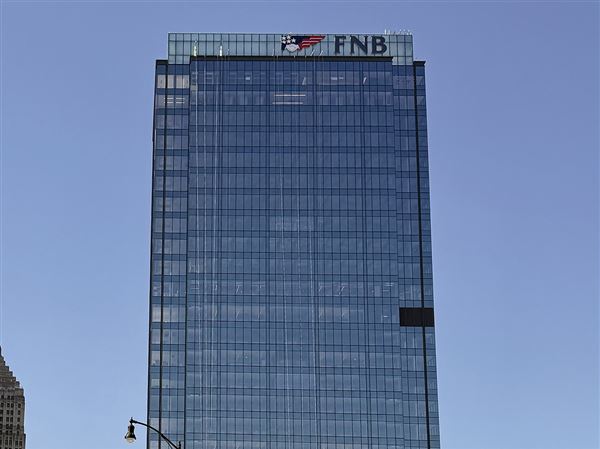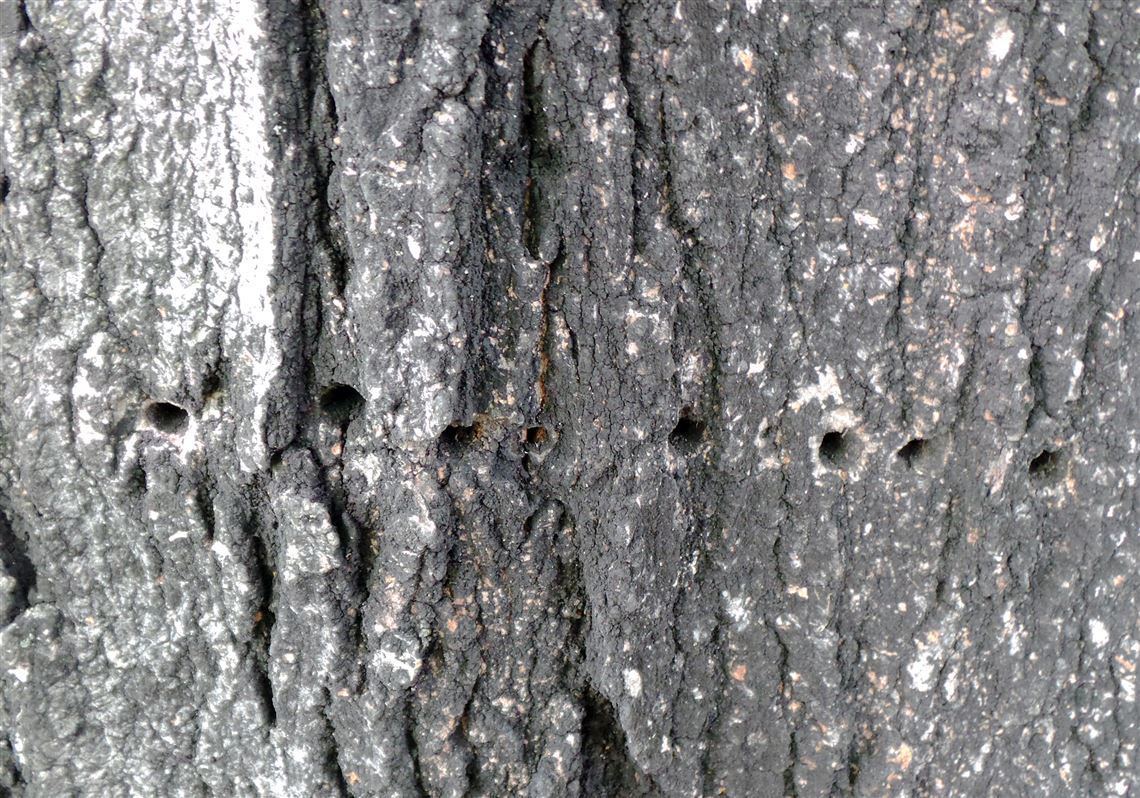Q. I have a sugar maple in my yard that is my pride and joy. I was alarmed to notice that the trunk is turning black. Can you look at these photos and tell me if you see anything I should be concerned about?
A. The photos show a distinct blackening of the bark, along with a row of small holes. This is the handiwork of the yellow-bellied sapsucker, a species of woodpecker common in western Pennsylvania. These medium-sized birds are barred black and white with bright red heads. Males also have a red throat. And yes, they have pale yellow breasts and bellies.
Sapsuckers are migratory birds that spend winter in the southern United States, Central America and the Caribbean and summer in the north. While insects are a major part of their diet, they also feed on sap. They test trees and feed only in those that have the best quality sap – high in sugar and amino acids.
Sugar maples are favored for the same reason that humans tap them. Other favorite trees include aspen, birch, magnolia, maple, poplar and pine. These birds will feed on more than 250 species of woody plants.
In this case, the damage is nothing to worry about. The blackening of the bark comes from excess sap dripping down the trunk being colonized by fungi. The fungi are not damaging to the tree but grow on the carbohydrate-rich sap. It is similar to the sooty mold that grows on the excrement of certain insects that we politely call “honeydew.” The flowing sap may attract other birds, including hummingbirds as well as bats, porcupines and insects such as bees and wasps.
Sapsuckers create two different types of damage to collect sap: horizontal rows of small, deep holes and shallow rectangular holes that damage the tree’s cambium tissue. The second type of feeding is more serious because it can affect large sections of bark, creating easy entrance into the tree for insects and disease-causing organisms.
To prevent this type of damage, wrap the trunk in burlap and pin it in place until the worst of their feeding is past. Then the wrap should be removed. However, this is not necessary for you because the damage is pretty minimal.
Send questions to Sandy Feather by e-mail at slf9@psu.edu or by regular mail c/o Penn State Extension, Energy Innovation Center, 1435 Bedford Ave., Suite A, Pittsburgh, PA 15219.
First Published: June 3, 2016, 2:12 p.m.
















